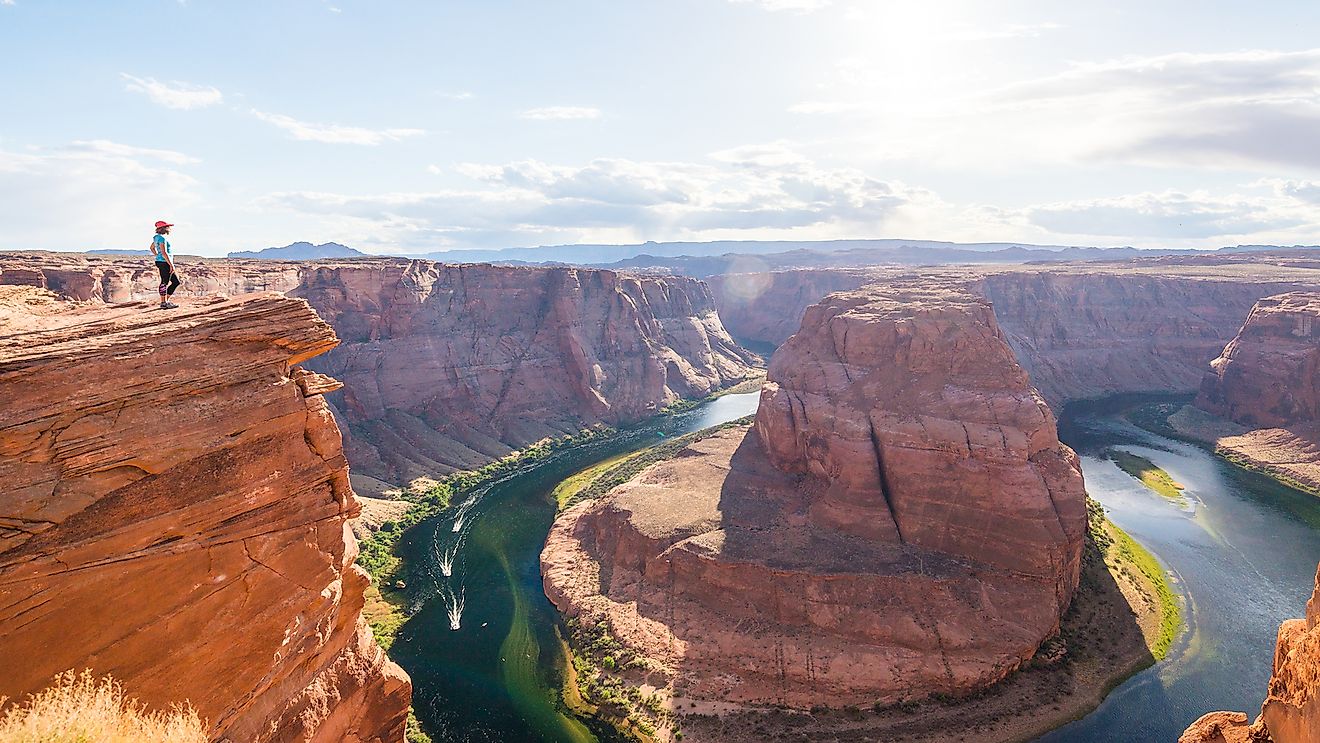10 Amazing Facts About The Grand Canyon National Park

The Grand Canyon National Park in northwestern Arizona was the 15th site to be named a national park in the United States. The park’s main attraction is the Grand Canyon. It covers 1,902 square miles and receives approximately six million visitors annually. It was designated a UNESCO World Heritage site in 1979. On February 26, 2019, the park celebrated its 100th anniversary. The following are interesting facts about the Grand Canyon National Park.
It Is Deep But Not The Deepest
The Grand Canyon is one of the world’s most spectacular canyons, but it is neither the deepest nor the world’s longest gorge. Its average depth is about one mile, but the depth varies from 2,400 feet to about 8,000 ft on the North Rim. The Yarlung Tsangpo Canyon in the Himalayas is the world’s deepest and longest with depths that can reach 17,567 feet. The narrowest section of the canyon is about 600 yards and 18 miles at its widest. On average, it is about 10 miles wide. The Capertee Valley in Australia is the widest at about 18 miles.
It “Gave Rise” To The FAA
In the 1950s, airplanes would fly over the Grand Canyon for passengers to have a better view of the valley. In June 1956, two airplanes flying to Chicago from Los Angeles both detoured and flew over the Grand Canyon air space. Unfortunately, the planes collided mid-air killing everyone. As a result, the FAA was created to oversee the movement of civilian and commercial flights across the American airspace.
Archaeological Treasure Trove
The Colorado River cuts through part of a metamorphic rock that is estimated to be about 1.75 billion years old. Some rock layers are estimated to be over 2 billion years. Sedimentary rocks around Vishnu schist are about 230 million years old and are believed to be older than dinosaurs. Although no dinosaur bones have been excavated in the area, fossils dating to 11,000 years ago have been found. Several marine fossils have been found farther from the river, suggesting that it was larger than it currently is.

Mysterious Formation Of The Grand Canyon
Geological evidence suggests that the Colorado River shaped the Grand Canyon about 5 to 6 million years ago. The river must have been large and with powerful currents to create such a gorge. Some archaeologists argue that the canyon already existed and only captured the flow of the Colorado River. A recent archaeological study unearthed rocks estimated to be 70 million years old on the Western end of the gorge, further fueling speculation of how the canyon really formed.
Bigger Than Rhode Island
The Grand Canyon National Park is 1,902 square miles, making it larger than the state of Rhode Island, which is 1,212 square miles. It is also larger than the District of Columbia, Guam, American Samoa, and the United States Virgin Islands. It is slightly smaller than mainland Delaware.
A Gateway To The Afterlife
The native Hopi people refer to the canyon as Öngtupqaor the gateway to the other world. It is of immense spiritual significance to the tribe. Upon death, a person was believed to go through several caves located upstream on his journey into the afterlife. Only religious leaders were allowed into the caves to perform sacrifice and beg the gods to receive the incoming soul.
The Rock Squirrel Of Grand Canyon Is Not To Be Ignored
There are several animals within and along the canyon borders, including black bears, mountain lions, rattlesnakes, venomous lizards, elks, and scorpions. However, these animals avoid humans, and encounters are rare. Based on the number of patients visiting hospitals or receiving medical care, the rock squirrel stands out as the most dangerous animal in the park. However, it attacks only when startled and hence, visitors must learn to respect wildlife and maintain a distance when touring the park.
A Thriving Biodiversity
At a glance, the Grand Canyon National Park looks like a desert with limited vegetation, but it is home to over 1700 species of vascular plants, 160 fungi, 60 moss, and 190 lichens. This diversity is created by the varying elevation of the Colorado River from the South Rim to the North Rim. A dozen plants are endemic, while 10% is exotic Flora. There are over 90 species of mammals, including 18 rodents and 22 bats.
Humans Inhabit The Park
The Supai Village within the Havasupai Indian reservation is the only human settlement allowed to reside in the Grand Canyon. It is home to about 200 people. The village is inaccessible by road and visitation is done by air. Some suggest that it is the most isolated residential community in the contiguous United States.
The Grand Canyon Creates Weather
The Grand Canyon is so vast that it creates its weather. The gorge declines gradually from an elevation of 8,000 feet in the North Rim to about 2,000 feet at the Phantom Ranch. The sudden change in elevation impact precipitation and temperature influencing weather. Depending on your elevation and location, the weather can either be rainy or sunny. On some occasions, warm air covers cooler air creating a form of dense clouds that can be seen below the North Rim.











